
How to Lead a Retrospective Meeting for Continuous Improvement? [ Tips + Techniques]
If you don’t learn from the past, you might end up bringing your umbrella to a sunny picnic. That’s why sprint retrospectives are a must-have for any team aiming for the stars. They let you dig into what’s going well, what’s going off track, and what needs a fresh coat of paint.
But let’s be honest, without a clear game plan, retrospective meetings can turn into a never-ending episode of ‘What went wrong?’
In this guide, we’ll explore what a retrospective meeting is, its importance, and how to conduct one effectively to boost your team’s performance.
So, without any further ado, let’s get started!
What is a Retrospective Meeting?
The general meaning of the word ‘retrospective’ is to look back at events that took place. Consequently, a retrospective meeting is part of an agile meeting process that occurs at the end of a project or sprint to help teams reflect on their performance and plan for improvement.
It’s a constructive meeting type where teams discuss successes, identify areas for process development, and resolve any issues that may have arisen. The goal is to enhance efficiency, teamwork, and project outcomes based on shared insights and lessons learned.
What are the Techniques of Retrospective Meetings?
There are different formats to conduct retrospective meetings. You can switch and experiment with them to keep your meetings more engaging and meaningful.
Listed below are 12 retrospective techniques:
Basic Retrospective Meeting
A straightforward approach where teams discuss what went well, what didn’t go well, any new ideas or suggestions, and actionable steps to improve processes for the next iteration or project.
Sailboat Retrospective
Uses the metaphor of a sailboat journey. The wind represents factors that pushed the project forward, rocks symbolize risks or obstacles encountered, anchors refer to delays or setbacks, and land signifies the project’s ultimate goal. It helps visualize the project journey and identify what accelerated or slowed progress.
Rose, Thorn, & Bud Retrospective
Participants identify positives (rose) from the project, negatives or challenges (thorn), and potential opportunities or areas for growth (bud). This retrospective encourages a balanced view of the project’s outcomes and provides space for discussions on continuous improvement.
Async Retrospective
The async retrospective is conducted using digital tools and is designed for remote teams. Team members contribute their reflections on what worked well, and what didn’t, and suggestions for improvement within a specified timeframe, minimizing the need for synchronous meetings.
4 L’s Retrospective
Focuses on four aspects: Liked (positive aspects of the project), Learned (lessons or insights gained), Lacked (resources or support that were insufficient), and Longed For (desired improvements or changes). It prompts deeper reflections on both technical aspects and team dynamics.

Dot Voting
A technique to prioritize discussion topics or action items. Each team member votes on sticky notes or digital tools for the items they consider most important. The results guide the discussion focus on addressing critical issues or opportunities.
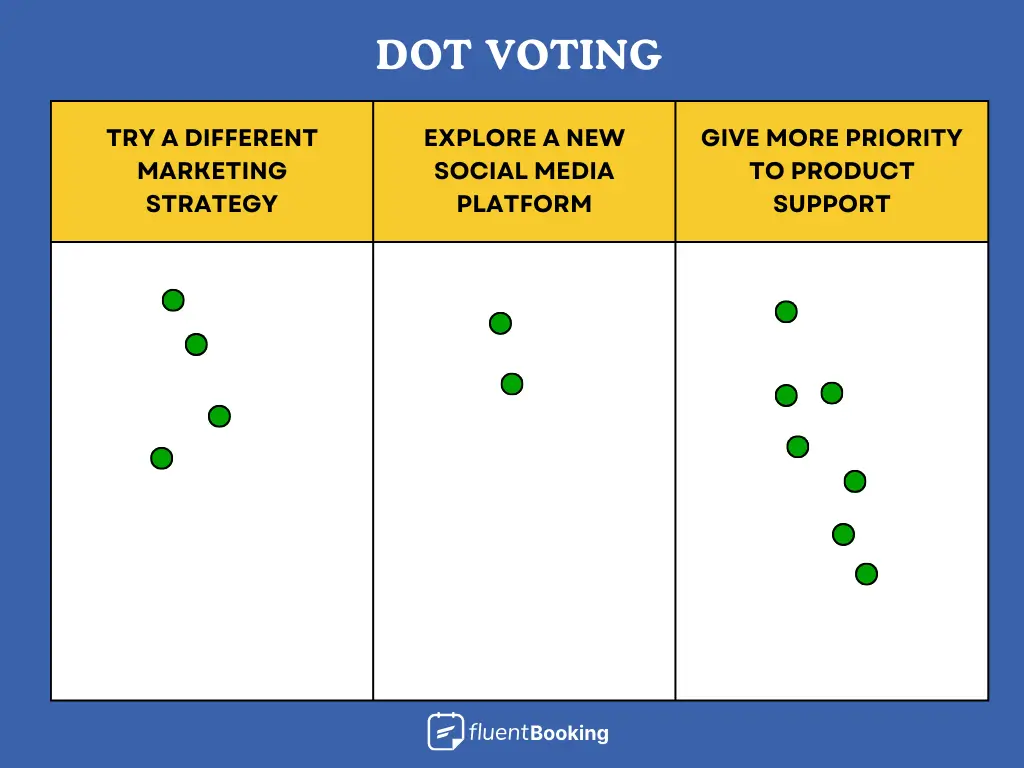
Past Two Months Map
Teams create a visual timeline of significant events, milestones, or challenges encountered over the past two months. This visual aid helps refresh memories and provides a chronological framework for discussing project achievements and setbacks.
Start, Stop, Continue Retrospective
Teams discuss actions or practices they should start (initiate or adopt), stop (discontinue or improve), and continue (maintain or reinforce) based on project goals, outcomes, and team feedback.
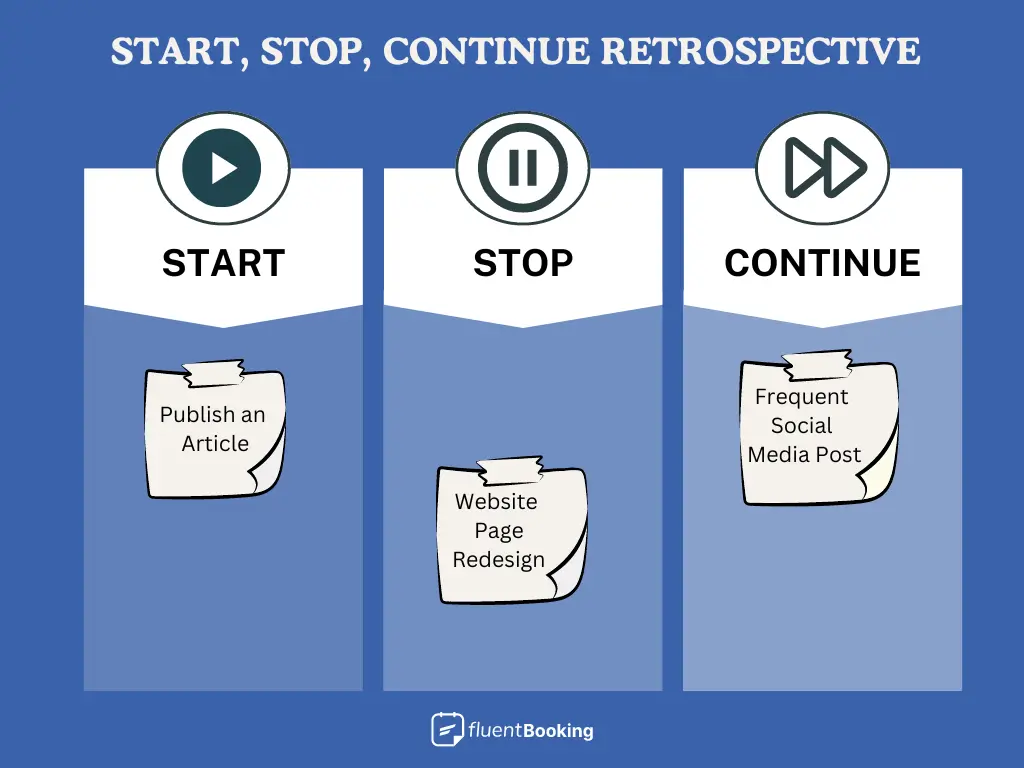
Question Cards Retrospective
It employs a series of predetermined questions, typically crafted to reflect Agile principles or team values. Each participant draws a question card to initiate discussions on specific aspects of the project, encouraging deeper insights and focused conversations.
DAKI (Drop Add Keep Improve) Retrospective
Teams evaluate current practices and processes to identify what should be dropped (eliminated), added (introduced or adopted), kept (maintained or reinforced), and improved (enhanced or optimized) to enhance team efficiency and project outcomes.
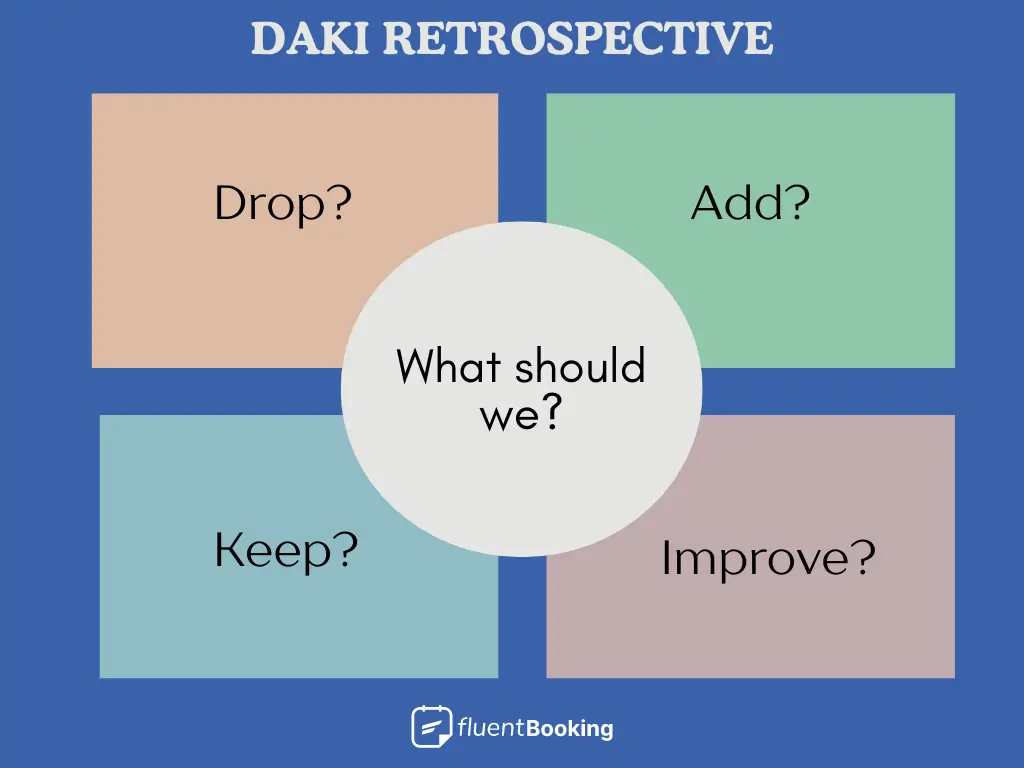
Mad, Sad, Glad Retrospective
Participants categorize their emotions or reactions to different aspects of the project into three columns: Mad (frustrations or anger), Sad (disappointments or concerns), and Glad (positive experiences or successes).
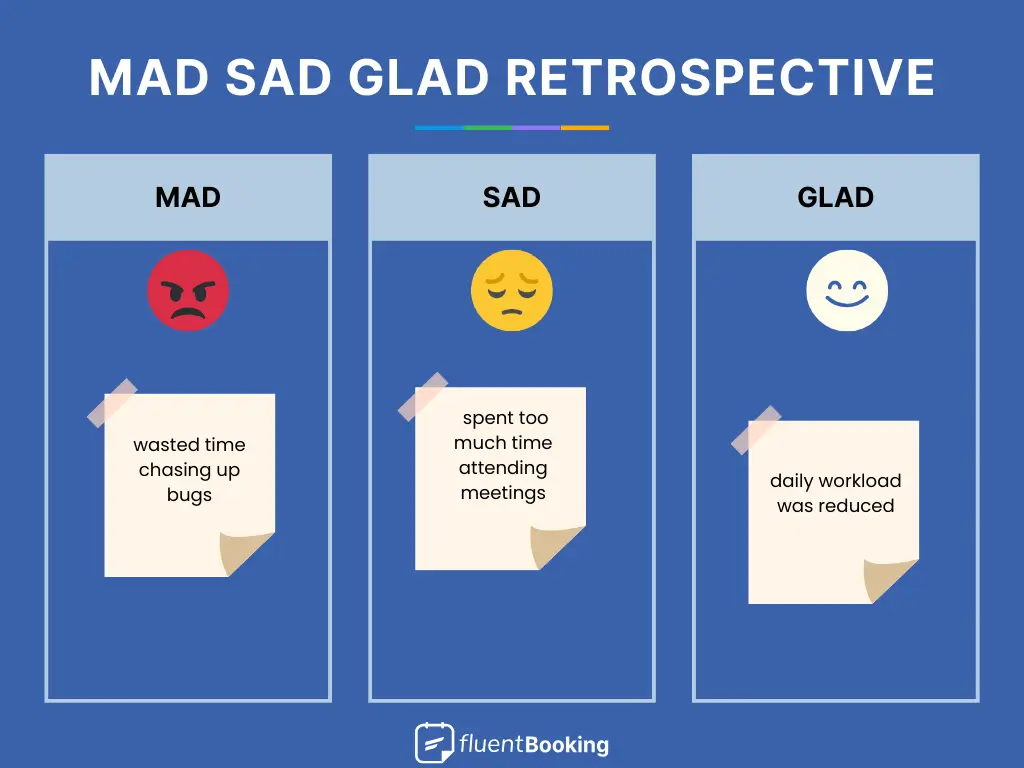
This retrospective promotes emotional intelligence, enhances team empathy, and addresses underlying tensions or challenges.
Starfish Retrospective
These meetings are structured around five key questions:
- What should we keep doing (continue)?
- What should we do less of (reduce)?
- What should we do more of (expand)?
- What should we stop doing (eliminate)?
- What should we start doing (initiate)?
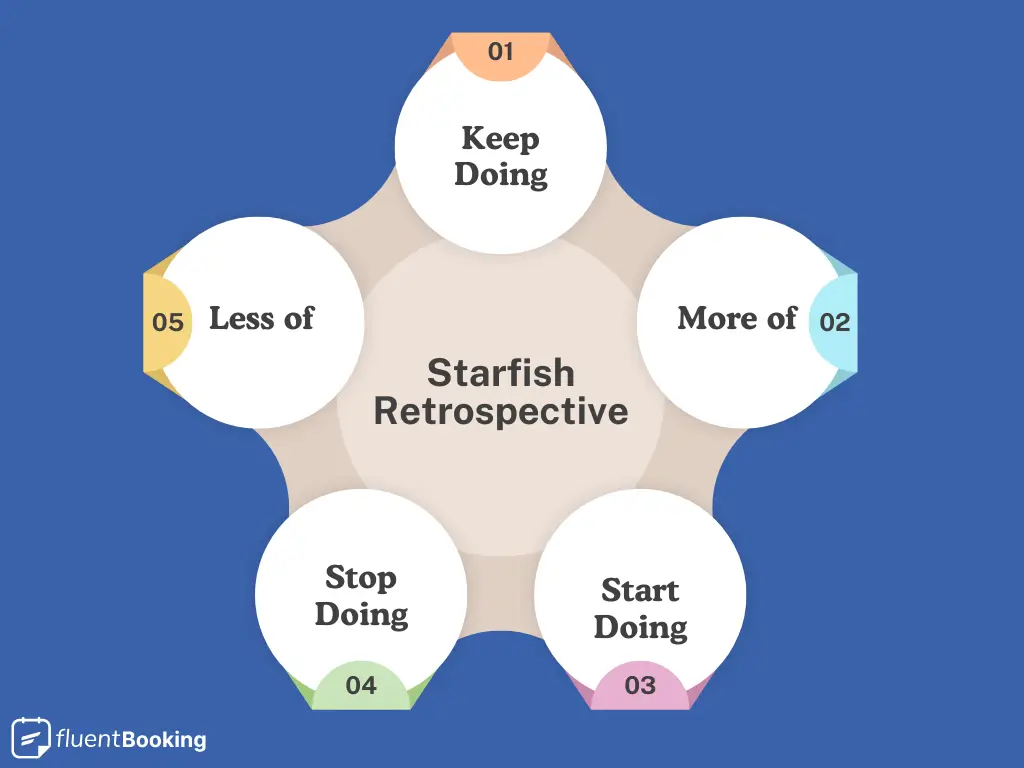
It provides a comprehensive framework for evaluating team processes and identifying actionable improvements.
Who Should Attend a Retrospective Meeting?
The following attendees attend a retrospective meeting to ensure a wide range of perspectives and feedback are shared, which is crucial for improving future sprints.
- All team members who worked on the recent sprint
- Product Owner
- Product Developer
- The Scrum team
- The Scrum Master
- Key stakeholders
What is the Purpose of a Retrospective Meeting?
Retrospectives might feel like an extra load when your team is juggling numerous tasks and tight deadlines. However, they’re more of a superhero than a villain!
A retrospective meeting serves the following purposes:
- Creates a safe space to solve problems together
- Encourages collaboration to tackle challenges
- Spots opportunities to improve workflows and results
- Celebrates team achievements and acknowledges hurdles
- Promotes continuous growth and strong teamwork
- Prevents repeating past mistakes by addressing them head-on
- Builds trust and learning through reflection and joint problem-solving
Best Practices to Run a Productive Retrospective Meeting
Read on to learn about 10 valuable tips to ensure your retrospective meeting is a success:
Establish a Clear Framework
To keep your retrospective meeting focused, establish a clear structure. The start/stop/continue framework is a great choice. This method helps identify what new practices the team should start, what ineffective actions should stop, and which successful practices should continue.
Questions to guide the discussion might include:
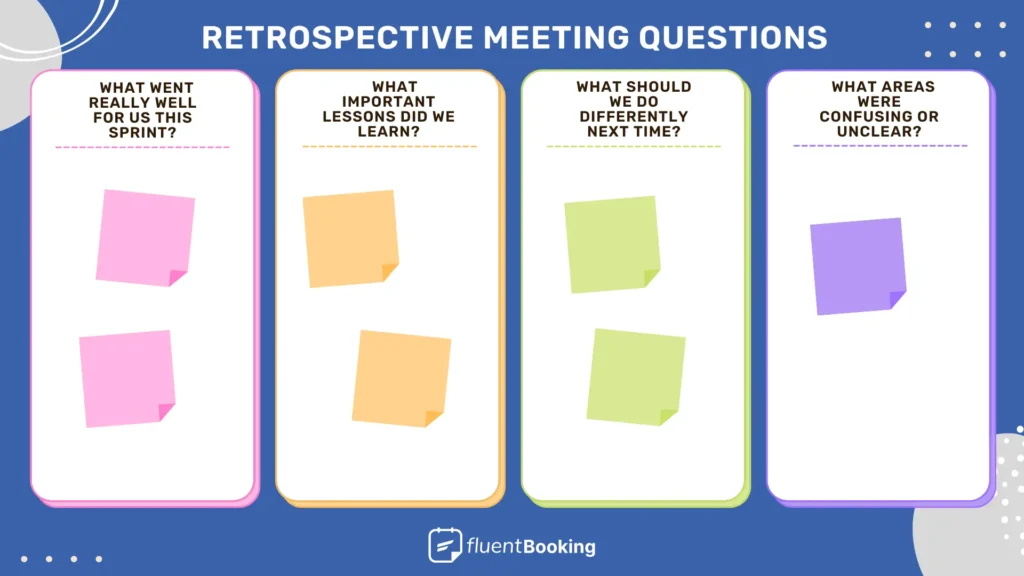
Gather Insightful Feedback
Get comprehensive feedback from all team members to understand the sprint from every angle. Use methods like the 4 Ls (Loved, Loathed, Learned, Longed for) to guide the conversation.
You can gather this feedback through group discussions, surveys, or even anonymous submissions. This variety ensures everyone feels comfortable sharing their thoughts and insights.
Optimize with Scheduling Tools
Use appointment scheduling tools such as FluentBooking to organize your retrospective efficiently. Select participants from your Agile team and prepare relevant questions ahead of time.
This preparation will ensure that everyone comes ready and the meeting runs smoothly, making it easier to collect all necessary discussion points and keep the session productive.
Have an Effective Agenda
Set a clear agenda so everyone knows what to expect and how to prepare. Tailor the agenda to meet your team’s specific needs to ensure productive discussions. This helps guide the team toward a meaningful session where valuable feedback is shared and actionable insights are gained.
Use Visualization Tools
Use project management tools like FluentBoards to visually represent different aspects of your project. Visual aids, such as project cards or calendar views, can help your team members better understand the issues at hand.
This approach makes it easier for everyone to engage and contribute meaningfully, ensuring that the discussion is both productive and inclusive.
Encourage Deep Discussions
Don’t just scratch the surface. Encourage deep and meaningful discussions. Ask detailed questions that dig into the root causes of issues. For example, instead of simply asking why there was a delay in customer response time, consider going deeper by asking why there are delays in the first place. This helps address the underlying issues.
Keep it Consistent
Hold retrospectives regularly to build a habit of continuous improvement. Whether you meet at the end of each sprint, monthly, or quarterly, regular retrospectives ensure that the team consistently evaluates and improves their performance. This consistency helps maintain a focus on improvement and learning.
Create a Safe Environment
Ensure that your retrospective is a safe space where team members feel comfortable sharing their thoughts without fear of judgment. Open communication is key to honest feedback and continuous improvement. Foster an environment of trust and respect so that everyone feels safe to speak up.
Focus on Solutions, Not Faults
Emphasize finding solutions rather than assigning blame. The objective is to learn and move forward, so focus on useful input and noteworthy steps for future sprints. This positive approach encourages participation and fosters a collaborative spirit within the team, making the retrospective more productive and enjoyable.
Time Your Meetings
Maintaining consistency is crucial for productive retrospective meetings, much like it is for sprints. Aim to keep your retrospective sessions concise, ideally around 45 minutes. Using timers for each part of the meeting can help maintain focus and ensure discussions stay on point.
This approach will create a lively and effective meeting atmosphere where everyone gets involved and contributes meaningfully.
Conclude with a Summary
Wrap up the meeting by summarizing the key takeaways and action items. Take a few minutes to thank your team for their participation and contributions. Proper closure gives everyone a sense of completion and shows that their time and effort are valued, reinforcing the importance of the retrospective process.
Empower Teams to Be More Agile with Retrospective Meetings!
While retrospectives take effort, they’re worth it. They boost team morale, uncover problems, and help solve them – all of which are key to becoming a strong team.
By following the best practices discussed above, you can create a space that encourages teamwork, honest thinking, and useful ideas. Employing appropriate tools for scheduling and record-keeping can also significantly improve the efficiency of your meetings.
Remember: Making retrospective meetings work well will be a big part of reaching your team’s goals!
Maisha Abedin
Hey, it’s Maisha! I enjoy crafting stories and producing content that adds value to readers. Outside of work, you will either find me capturing the beauty in the mundane or daydreaming about the perfect lasagna!
Table of Content
Subscribe To Get
WordPress Guides, Tips, and Tutorials











Leave a Reply